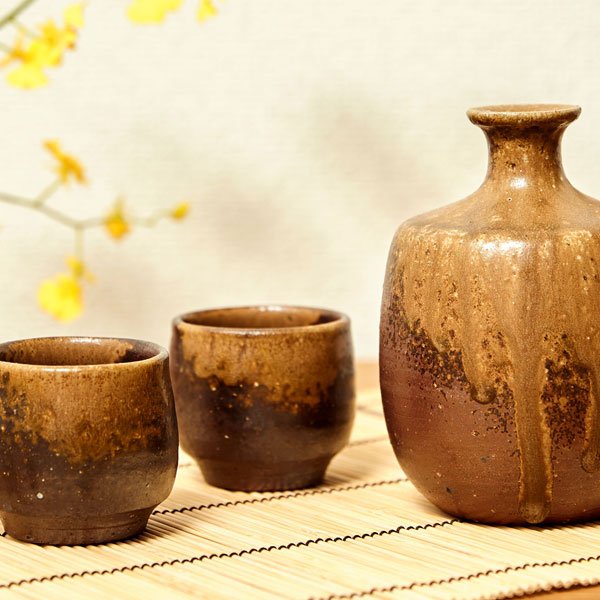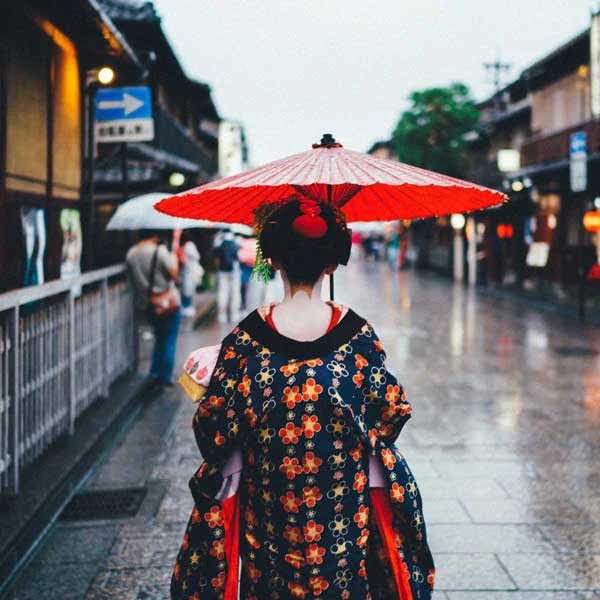6 Things You Need to Know About Kumiko Woodworking
by Jessica Esa | CRAFT
© Toyoda Woodworks, Kumiko Screen
If you’ve ever stayed in a ryokan, visited a traditional Japanese home, or even just watched an anime series or two, chances are you’ve come across kumiko. Synonymous with traditional Japanese architecture, kumiko are an integral part of Japanese home design. But, what is kumiko? where can you buy kumiko furnishings? and how can you learn this art for yourself? Find out all you need to know about kumiko here!
1. What is Kumiko?
Beginning as an artform in the 8th century CE and remaining an active form of carpentry in Japan to this day, kumiko is a uniquely Japanese style of woodwork. The process involves interconnecting carved wooden pieces together, in intricate patterns, to create a finished panel without the use of glue, nails, or any other external tools.
Kumiko panels slot together and remain in place through pressure alone, and that pressure is achieved through meticulous calculating, cutting, and arranging. The end result is a complex pattern that is used primarily in the creation of shoji doors and screens. If you want to learn more about Shoji, find out All You Need to Know About Japanese Paper Screens.
The scale and variety of arrangement of geometric patterns used in kumiko is limitless. Any geometric pattern can be used, and in order for the kumiko to be sturdy and secure, absolute symmetry must be achieved. As such, the creation of kumiko has been considered, for more than a thousand years, to be a respected and impressive form of carpentry and artistry in Japan.
The geometric patterns that are achieved are often designed after aspects of nature, such as shapes resembling cherry blossoms and hemp leaves. Each visual motif has a traditional meaning behind it, and this would inform how or why it might be used, such as the hemp leaf pattern warding off evil spirits.
2. The Origins of Kumiko
The art of making kumiko panels began in the 8th century CE, during the Asuka period. This was a fascinating period in Japanese history which shortly followed the introduction of Buddhism to Japan, as well as the nation debuting the name Nihon (loosely meaning land of the rising sun).
The Asuka period was a time of intense political shifts in Japan, but it was also a time when the arts began to blossom. New forms of artistry, many of them influenced by Chinese art and architecture, began to take hold and shape the future of Japanese tradition. Among these was kumiko, which became a vital aspect to Japanese interior design from this period onwards.
3. How are Kumiko Made?
Kumiko wood is predominantly chosen and sourced from Japanese cedar and cypress trees. The wood from cypress trees is also used in the construction of Buddhist temples. This wood is durable, long-lasting, and bright in colour.
As you can see in the video above from Shiraishi Mokki, the construction of kumiko involves no nails, screws, or glue, only the slotting together of wood pieces in geometric shapes, held firmly together by equally dispersed amounts of pressure. Everything is done by hand, from the carving of each individual piece (of which there are hundreds) to the assembling of the finished panel.
In order for a kumiko panel to function, each piece must be accurate to within 0.1mm, and the symmetry between them is all but absolute. Kumiko panels come in a range of symmetrical geometric patterns, most of which are inspired by nature (usually leaves and flowers) and hold a specific meaning. The sakura (cherry blossom) pattern, for example, would be used to encourage and hope for a good harvest.
Kumiko artisans can train for decades and most master kumiko craftsmen come from a long line of woodwork specialists. For example, Matsuo Tanaka, founder of the Tatematsu brand, hand crafts all of his products, has specialized in kumiko woodcrafts for over fifty-two years and can make over 250 patterns. He states in an interview that the hardest part of kumiko is creating a straight line.
4. Popular Kumiko Patterns
While there are hundreds of possible kumiko patterns, here are some of the most popular designs that you will start to notice when looking at shoji screens and kumiko crafts.
Asanoha
© Tanihata Kumiko, Asanoha Kumiko Pattern
Most commonly seen in Buddhist furnishings, this is one of the most popular kumiko designs in Japan and has been used since the Heian period (794 – 1185). It resembles a hemp leaf (麻の葉, asanoha) and is connected with growth and children’s health, as hemp leaf is strong and grows quickly.
Seikaiha
© Tanihata Kumiko, Seikaiha Kumiko Pattern
The name for this pattern originated from a song and dance in The Tale of Genji and has remained one of the most popular and traditional kumiko designs. Representing the abundance of the sea, the curves of the wood remind the viewer of the lapping waves of the sea.
Goma
© Tanihata Kumiko, Goma Kumiko Pattern
Resembling a sesame seed pod, which were first promoted as a health enhancer when they first arrived in Japan in the sixth century, this distinctive pattern is associated with good health and was commonly seen on the formal clothes of samurai.
Shokko
© Tanihata Kumiko, Shokko Kumiko Pattern
A traditional and noble pattern, the square and octagonal shapes represent the River Shokko which existed in the ancient Chinese country of Han.
Sakura
© Tanihata Kumiko, Sakura Kumiko Pattern
A symbol so commonly associated with Japan, the fleeting sakura blossoms have been immortalized in kumiko patterns for centuries. You can also find the sakura-kikkou pattern which is slightly different but still demonstrates the beauty of cherry blossom.
5. Where to Buy Kumiko
Tanihata Kumiko
Tanihata Kumiko have galleries in Shinjuku and Kobe as well as the main factory in Toyama so there are plenty of options for popping in, browsing and experiencing the kumiko physically if you’re in Japan. Specialising in kumiko production for over half a century they have eighteen design motifs to choose from with customisable strength. They are also equipped for creating kumiko in bulk to the excess of 100 pieces and use a combination of handcrafted designs and modern digital production equipment. They also carry varying species of wood to suit different budgets including the high quality Kiso Cypress, Jindai Cedar and Akita Cedar wood.
Yoshihara Woodwork
Located in the Murodani village in Shimane, the craftsmen at Yoshihara Woodwork have been creating wooden kumiko pieces such as furniture and fittings by hand for over sixty years. Whether you’re looking for a simple border kumiko to add a touch of art to your home, a shoji screen, or full doors, the range of choice here with over two hundred designs on offer is astounding. Yoshiwara is selective with the wood they use for their kumiko products, choosing the right wood for the product such as Japanese cypress and cedar where the ageing process allows your piece to evolve and deepen in colour over the years or international spruce wood that retains its original light color.
Sashikan Tategu Kogei
To combat the declining need for kumiko products, a new technique called Kakumaru kumiko was developed at Sashikan Tategu Kogei which essentially meant producing designer goods which would revolutionize traditional concepts. Here they work with modern designers to create exciting shapes, designs, and artworks using kumiko which slot into modern spaces and contemporary and sustainable ideals. The craft at Sashikan have been passed down through three generations using techniques that can only be learned here. Some of their contemporary products include kumiko photo frames, coasters, lamps, and stationery boxes and their larger pieces often depict entire natural scenes such as Mount Fuji and coloured artworks such as Nagoya Castle. They also offer traditional styles and patterns for those that would prefer.
Toyoda Woodworks
© Toyoda Woodworks, Kumiko Screen
The woodworking town of Kanuma, in Tochigi prefecture, has a long history of kumiko and hemp production. Kumiko in the area are predominantly made using cypress wood and named Kanuma Kumiko after the craftsmen who have competed over generations to develop finer and more complex patterns used in their shoji latticework. Artisans gathered in the area over 380 years ago as renovations of the Nikko Toshogu temple complex took place drawing the nation’s best temple-building artisans, including craftsmen in carpentry, sculpture and lacquerware. The skills took root in the area and led to generations of woodwork expertise. Toyoda Woodworks sells a wide selection of kumiko products including coasters, trays, and decorations as well as large custom home fittings and screens.
6. How to Make Kumiko Yourself
Many master kumiko artisans are self-taught and while it can take years to create complex patterns, it’s easy to get started with basic Japanese woodcrafts. Here are some ways you can get started on your kumiko journey.
The Art of Kumiko: Learn to Make Beautiful Panels by Hand provides the perfect introduction to creating your own kumiko art and also how to apply it to furniture as well as framed panels. Included are cutting diagrams for several original decorative wall panels with detailed instructions on how to create them combining modern woodwork equipment and the precision of hand tools.
JO SELECTS offers helpful suggestions, and genuine recommendations for high-quality, authentic Japanese art & design. We know how difficult it is to search for Japanese artists, artisans and designers on the vast internet, so we came up with this lifestyle guide to highlight the most inspiring Japanese artworks, designs and products for your everyday needs.
All product suggestions are independently selected and individually reviewed. We try our best to update information, but all prices and availability are subject to change. As an Amazon Associate, Japan Objects earns from qualifying purchases.














LIFESTYLE | July 28, 2023